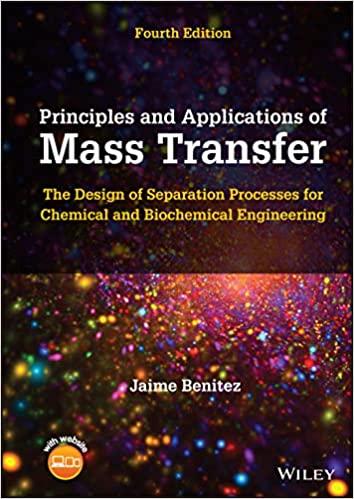A gas absorber is used to remove benzene (left(mathrm{C}_{6} mathrm{H}_{6} ight)) vapors from air by scrubbing the
Question:
A gas absorber is used to remove benzene \(\left(\mathrm{C}_{6} \mathrm{H}_{6}\right)\) vapors from air by scrubbing the gas mixture with a nonvolatile oil at \(300 \mathrm{~K}\) and \(1 \mathrm{~atm}\). At a certain point in the absorber, the benzene mol fraction in the bulk of the gas phase is 0.02 , while the corresponding interfacial benzene gas-phase concentration is 0.0158 . The benzene flux at that point is measured as \(0.80 \mathrm{~g} / \mathrm{m}^{2} \cdot \mathrm{s}\).
(a) Calculate the mass-transfer coefficient in the gas phase at that point in the equipment, expressing the driving force in terms of mole fractions.
(b) Calculate the mass-transfer coefficient in the gas phase at that point in the equipment, expressing the driving force in terms of molar concentrations, \(\mathrm{kmol} / \mathrm{m}^{3}\).
(c) At the same place in the equipment, the benzene mol fraction in the bulk of the liquid phase is 0.125 , while the corresponding interfacial benzene liquidphase concentration is 0.158 . Calculate the mass-transfer coefficient in the liquid phase, expressing the driving force in terms of mol fractions.
Step by Step Answer:






